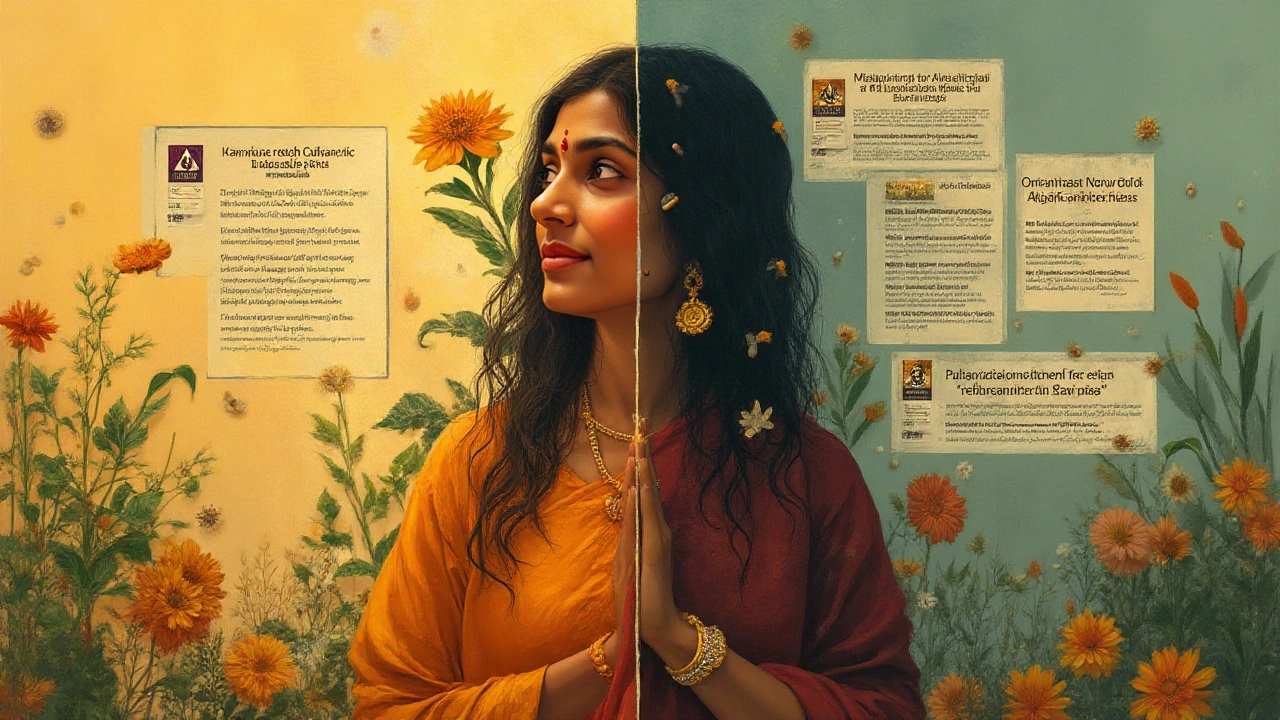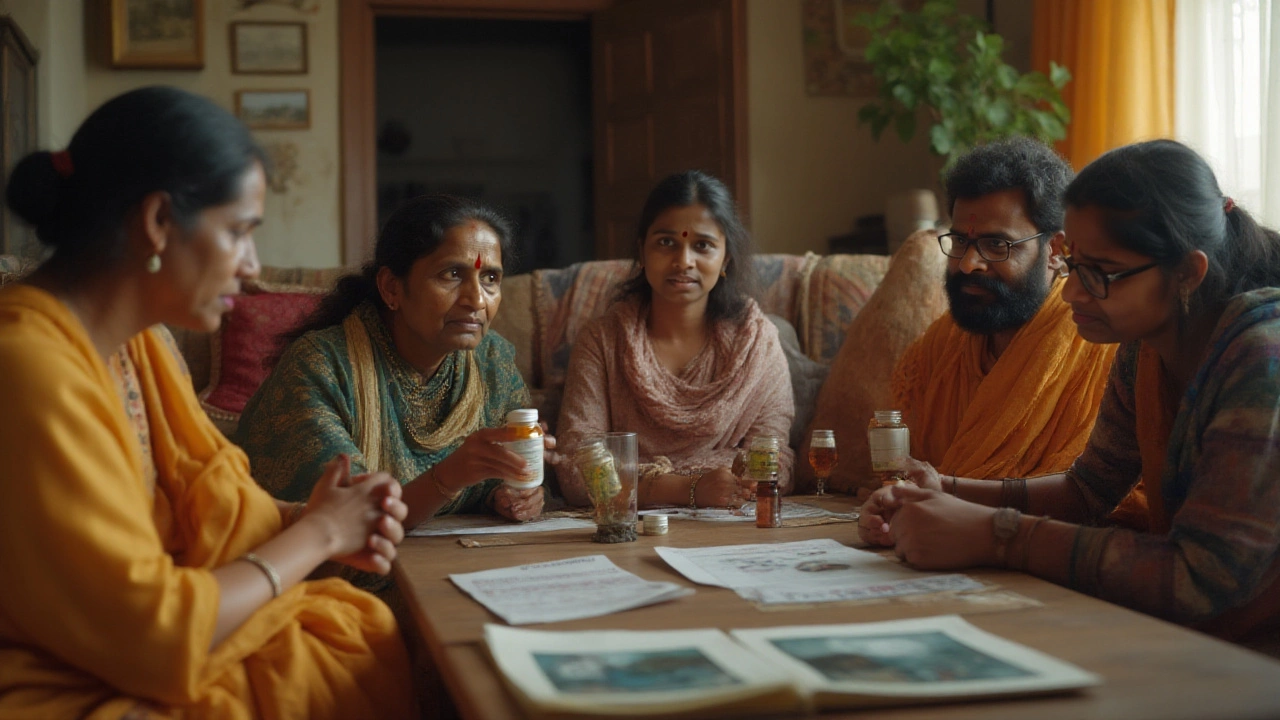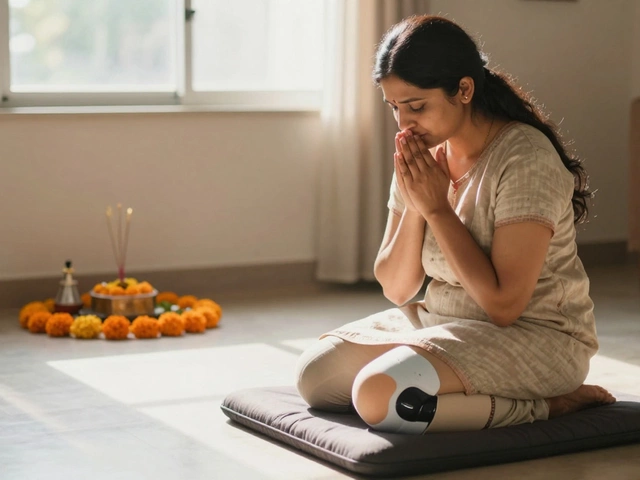Picture this: My friend’s dad drinks a bitter Ayurvedic potion every morning, swearing it keeps his blood sugar steady. Another swears by a branded Ashwagandha tablet for her stress. Pretty much anyone in my Bangalore social circle has tried, or at least been tempted by, Ayurvedic medicine. And why not? Ayurveda’s roots go back over 5,000 years. With all the talk about returning to nature, it sounds safer than anything you’ll find in a pharmacy, right? But then you hear news of heavy metals or people having allergic reactions and suddenly, that ‘natural’ tag feels a little shaky. So, how safe are Ayurvedic drugs, really? Let’s look past the marketing and dig into the facts, science, and stories—not just the shiny images on those green bottles.
What’s Really Inside Ayurvedic Medicines?
When we talk about Ayurvedic medicine, we don’t mean just one thing. There are hundreds—maybe thousands—of different formulations. Some use just plants, like tulsi or neem leaves. Others combine herbs with minerals, or even metals like lead, mercury, and arsenic (seriously!).
Big shock? Not if you understand Ayurveda as it’s practiced traditionally. Metals and minerals—known in Ayurveda as ‘Bhasmas’—have a long history. People believed that, properly processed, these could become beneficial instead of toxic. My grandmother talks about ‘Swarnabhasma’ (gold ash) mixed in her homemade ghee sweets. But here’s where things get dicey. The traditional process to detoxify metals is complex, slow, and needs skill passed down generations. It’s not the type of thing you can rush on a factory assembly line. Still, more than 20% of the proprietary Ayurvedic medicines tested by researchers in India in 2023 contained at least one heavy metal above safe limits, according to the Central Drugs Standard Control Organization (CDSCO). That’s not something you see on the product label.
Another issue is the use of wild, foraged herbs. Without controlled farming, contamination with pesticides, unsafe drying, or wrong plant identification can easily slip by. Even in Bangalore, where we pride ourselves on top biotech, fake ‘pure’ oils and powders enter the market. In 2022, a study by the Ministry of AYUSH found that more than 18% of bought samples from unregulated vendors in Karnataka failed quality checks.
Here’s a table showing some of the most common substances found in Ayurveda, and their known risks or controversies:
| Substance | Traditional Use | Modern Risk |
|---|---|---|
| Ashwagandha | Stress, energy, immunity | Possible thyroid changes, allergy risk |
| Swarnabhasma (Gold ash) | Longevity, anti-aging | Heavy metal accumulation if impure |
| Lead Bhasma | Epilepsy, anemia | Lead poisoning, brain/kidney damage |
| Guggul | Cholesterol control | Allergic rash, liver strain |
| Brahmi | Memory | Digestive upset in some users |
| Neem | Detox, skin health | Liver toxicity in high doses |
Ayurveda’s promise depends a lot on how things are prepared. If your bottle comes from a trusted, regulated brand, it might be free from bugs and toxins. Something mixed at a local street stall? You’re gambling with your health, even if it smells like your grandma’s kitchen.

Science, Regulations, and the Reality Check
The word ‘natural’ has a halo effect. In a city like Bangalore, where tech workers queue up for wheatgrass shots after late-night coding, it’s almost like natural means harmless. But natural and safe aren’t the same. Just because gooseberries grow on trees doesn’t mean they’re safe for every single person, in any amount. My wife, Anjali, can eat all the amla she likes. But my friend had a terrible rash after using amla oil sold by an Instagram ‘ayurveda’ influencer. Turns out, plant allergies aren’t rare at all.
The government does regulate Ayurvedic medicines in India. Major players like Dabur, Himalaya, or Baidyanath are expected to stick to standards set by the Ministry of AYUSH. Every serious brand must display a license from their State AYUSH department. But here’s a not-so-fun fact: as of late 2024, only 42% of Ayurvedic drugs passed surprise batch tests by CDSCO for complete purity across all Indian states. Contamination with heavy metals, fungus, and even prescription drug adulteration popped up. Imported herbal supplements face even looser scrutiny. The U.S. FDA issued multiple warnings last year about Ayurvedic pills from India being tainted with high lead or mercury levels.
So, what does the law say? In 2023, the Indian Drugs and Cosmetics Act was updated to tighten rules on metals and require better labelling. All Ayurvedic products must now display ingredients (in English and Sanskrit), expiration dates, and manufacturer details. Anything with bhasmas needs a clear explanation. But enforcement is tricky. The market’s flooded with thousands of small, unregistered makers. Scary, isn’t it?
Here are some real numbers about reported health incidents:
- Doctors in major Indian cities reported more than 300 confirmed cases of heavy metal poisoning linked to Ayurvedic products, between Jan 2023 – April 2025, according to the Indian Medical Association.
- About 1 in 20 chronic kidney disease cases seen at Bangalore’s top nephrology clinics had a history of regular, unsupervised herbal supplement use.
- A controlled study at NIMHANS in 2024 found 6% of patients using certain herbal stress relievers developed mild, reversible liver inflammation.
Most people tolerate properly made Ayurveda just fine. But mess-up the manufacturing or take a lot more than you should, and things can go wrong fast. It’s not so different from cooking: a sprinkle of salt is great, a handful will ruin your food and maybe your day.

Staying Safe: Smart Tips and Real-Life Stories
Ayurveda’s magic often depends on the hands making the preparation. Take my uncle, who only buys branded chyawanprash with a certificate on the jar. He hasn’t had any problems. On the other hand, my neighbor landed in the ER after drinking a homemade herbal liver tonic he saw on Facebook. The culprit? Too much ‘Kutki’—a root that’s great in micro-doses, but risky in large amounts.
Here’s where practical advice comes in for anyone in India or beyond:
- Don’t believe every ‘natural is safe’ claim. Cyanide’s natural, too. Ask for proof: does the brand have a Ministry of AYUSH license? Do they show lab reports?
- Stick to big names or practitioners who are registered with the Central Council of Indian Medicine. Not every local sigdi-wala is trained or regulated.
- Never mix Ayurvedic drugs with modern prescription meds without telling your doctor. Herbal stuff can interact dangerously with blood thinners, diabetes meds, even antidepressants. Your regular doctor needs the full picture.
- Watch for early symptoms: stomach pain, rashes, tiredness, or yellowing of skin. Stop the medicine and get checked. Don’t ‘wait it out’ if you feel unwell.
- Be especially careful if you’re pregnant, breastfeeding, very old, or managing chronic diseases. The ‘ayurvedic boost’ promised by some products can backfire.
- With DIY or YouTube recipes, use caution. Small changes in dose can make a big difference. Bhasmas especially should only be taken under real expert guidance.
- Check expiration dates and storage advice. Some ayurvedic pills spoil quickly in Bangalore’s humidity, growing invisible molds.
Here’s an eye-opening story from my friend Swati, who runs an organic shop in Malleshwaram. She found that over half her customers believed ayurvedic medicines could not cause side effects, simply because they were ‘herbal.’ One college student ended up with stomach ulcers after taking excessive home-brewed triphala for weight loss. After that, Swati started asking for authentic prescriptions and vendor licenses. Her business took a hit—most unlicensed local sellers don’t like questions. But her customers got safer options. Sometimes, a little skepticism (and paperwork) saves a lot of grief.
So, are Ayurvedic medicines safe? They definitely can be, if you buy right, check sources, and treat these ancient remedies with respect, not blind trust. Ayurveda isn’t magic or myth—it’s medicine. To get the best out of it, stick to certified brands, consult real experts (the kind with years of training, not just a catchy Instagram reel), and listen to your body. Nature works, but only when you respect its power.

 Using US Health Insurance Abroad: What You Need to Know
Using US Health Insurance Abroad: What You Need to Know
 IVF Cost per Cycle: How Much Does One Round Really Cost?
IVF Cost per Cycle: How Much Does One Round Really Cost?
 Can You Kneel After Knee Replacement? What Really Happens and When You Can Expect to Kneel Again
Can You Kneel After Knee Replacement? What Really Happens and When You Can Expect to Kneel Again
 Which Bone Never Heals? The Surprising Truth About the Hyoid Bone
Which Bone Never Heals? The Surprising Truth About the Hyoid Bone
 Best Diabetic Pill: Why Metformin Is Still the Leading Diabetes Medication
Best Diabetic Pill: Why Metformin Is Still the Leading Diabetes Medication